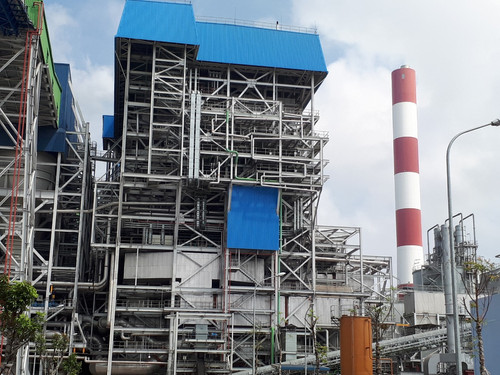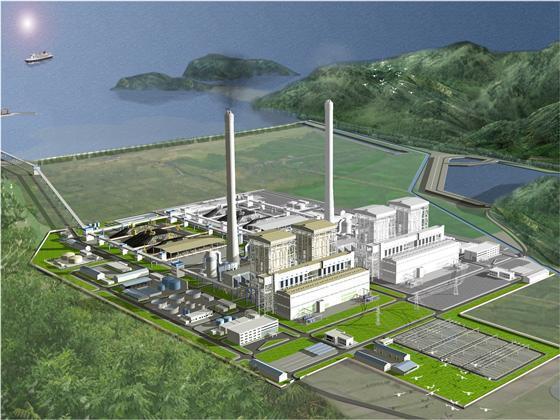- © Copyright of Vietnamnet Global.
- Tel: 024 3772 7988 Fax: (024) 37722734
- Email: [email protected]
thermopower
Update news thermopower
Lacking money, work on privately funded thermal power projects stalls
The thermal power projects developed by private investors all have been going slowly because of multiple problems.
Hundreds of engineers working to revive Thai Binh 2 Thermopower Plant
Over the last eight months, Government leaders have on four occasions examined the execution of the Thai Binh 2 thermopower project to be sure that the power plant can generate electricity by April 30, 2022.
Thermal power plant dumps slag, but city officials punish locals
Thousands of tons of ash and slag from Mong Duong 1 Thermal power Plant in Cam Pha City of Quang Ninh province was dumped into the environment early this month.
Vietnam needs policy on recycling thermopower slag: experts
Thermopower ash and slag is considered normal solid waste, suitable to be used in the construction industry. However, no state management agency has been assigned to provide certification that ash and slag is not hazardous waste.
Thermal power plants queuing for permission to submerge materials in sea
VietNamNet Bridge - Coal-fired thermal power plants’ investors have asked for permission to submerge sludge and waste in the sea, raising big concerns about sea pollution.
Coal-fired thermopower development: which technology for Vietnam?
Energy experts have reassured the public that Vietnam uses advanced technologies in coal-fired thermopower plants, which continue to be the major choice for electricity generation projects.
Chinese investors flock to Vietnam to develop coal-fired thermopower plants
VietNamNet Bridge - Many coal-fired thermopower projects have been proposed recently despite environmentalists’ call to stop developing thermal power. Most of them are Chinese invested.
Coal-fired plants use advanced absorption technology to cut emissions
VietNamNet Bridge - Several coal-fired thermal power plants in Vietnam have begun applying a high-tech method to reduce emissions.
Vietnamese investor to build hydropower plant with Chinese capital
Eighty percent of the project’s capital that Geleximco plans to develop would come from a syndicated loan to be provided by a group of Chinese banks led by China Development Bank.
Will a carbon tax be imposed on coal-fired thermal power plants?
VietNamNet Bridge - Experts believe that if Vietnam imposes a carbon tax on coal-fired plants, ‘clean power’ will be able to compete with thermal power.
Ash & slag from thermal power plants threatens Ha Long Bay
VietNamNet Bridge - The seven million tons of ash and slag produced by the thermal power plants in Quang Ninh province are harming the environment and threatening Ha Long and Bai Tu Long Bays.
How will 16 million tons of ash and slag be used?
The waste from coal-fired power plants includes solid, liquid and gaseous waste, including 16 million tons of ash & slag and gypsum discharged every year. But only 30 percent, or 5 million tons, is treated and re-used.
Vietnam’s coal-fired thermal power dependent on China
VietNamNet Bridge - Many of the coal-fired thermal power plants in Vietnam are Chinese invested, developed with Chinese capital and run with Chinese technology.
Vietnam considers lowering environmental standards on treatment of ash, slag
As the amount of ash and slag left untreated at coal-fired thermopower plants is increasing, some ministries have proposed lowering the required environmental standards to help the plants deal with the problem.
Expert: 14 thermal power plants in Mekong Delta too much
Building 14 thermal power plants in the Mekong Delta is a “very unsustainable development scenario”, Nguyen Minh Due, chair of the Energy Science Council of the Vietnam Energy Association, said.
Hanoi air polluted by thermal power plants
VietNamNet Bridge - Inspection tours by the General Directorate of Environment at 19 thermal power plants have found that regulations on environmental protection have been violated at many plants.
Environmental groups call for reconsideration of thermal power plan
Several coal thermal power plants are expected to be built in the Mekong Delta under the 2011-2020 plan for national power development. What are the options for energy development in Vietnam?
Coal thermal power plants affecting rice production in Mekong Delta
Under the national electricity development plan, coal thermal power will make up 50 percent of Vietnam’s total electricity output from 2020. The Mekong River Delta will become one of the nation’s thermal power centers.
BUSINESS IN BRIEF 11/6
Shrimp exporters move against US extra duties; Rolls-Royce eyes Vietnam market; Indian firm invests US$1.8 billion in Long Phu thermal power plant; EC to announce FTA impact on Vietnam


















